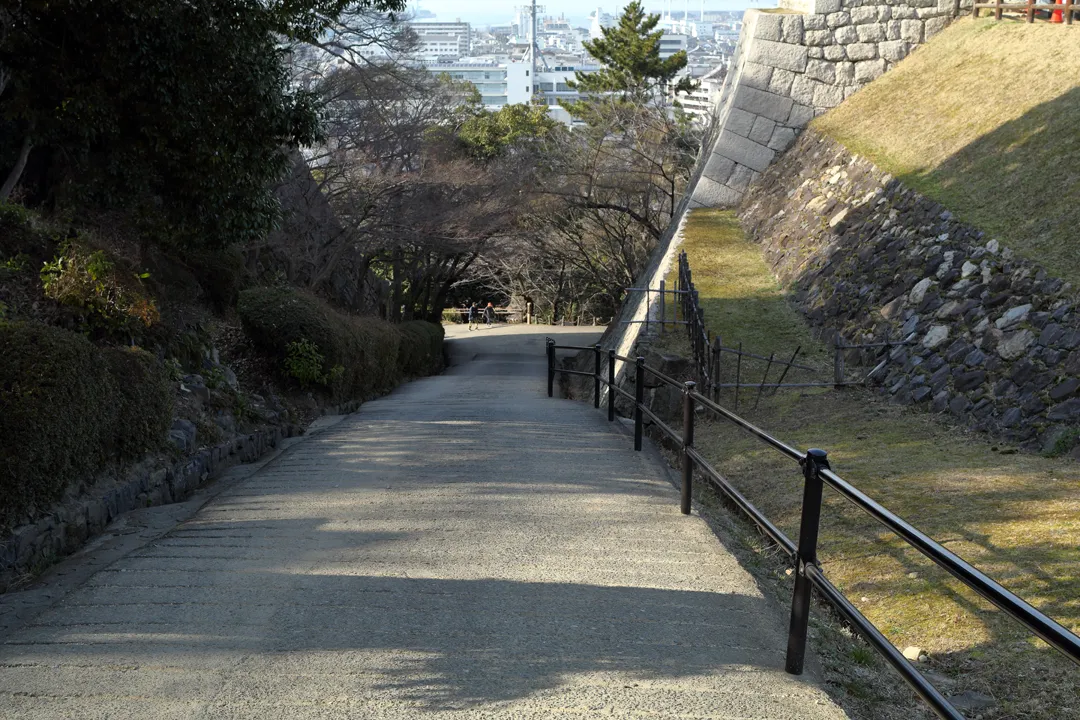In Shikoku, the smallest of the four Japanese home islands, there exist four original castles, more than in any other region of Japan. They have survived to the present day mainly because Shikoku had been considered strategically unimportant and so was not heavily bombed by the Allies in 1945. Even now, the region remains overlooked by most tourists despite being relatively accessible.
Among the castles of Shikoku, Marugame Castle in Marugame, Kagawa Prefecture is the easiest and most straightforward to visit. From Okayama, a major transport hub, we rode the Shiokaze limited express for 45 minutes, crossing the Great Seto Bridge from Honshu to Shikoku, and then walked just 1 km from the station to the castle’s main entrance.

As a hirayama (平山, or flatland mountain) castle, Marugame Castle is located on a hill surrounded by plains, and consequently dominates the city’s skyline. Its outer walls, 60m high in total, are the highest of any Japanese castle and are far more imposing than the keep itself.

The castle site is approximately rectangular, 500m long and 475m wide, and fully enclosed by the moat. The main gate is on the north side and is quite impressive in terms of scale.

Except for the interior of the keep, the castle is used as a city park and very popular with locals. We proceeded to climb to the top level of the fortifications. One part of the path is a steep slope without steps, but at least paved.

The keep is located on the north side of the highest layer of walls, overlooking the city center and the port. Of course, we could also enjoy the view in all other directions.

The densest areas can be found north of the castle, along the coast of the Seto Inland Sea.


On the other hand, the plains to the south are characterized by suburbs interspersed with farmland and hills.

After relaxing for a while, we headed back down and returned to the station area. We had originally planned to visit the modern art museum in front of the station, but unfortunately, it was temporarily closed for the rotation of exhibits. However, we did manage to take some photos with the large artworks outside.

Finally, we retrieved our luggage and waited for the train to Matsuyama. It had been a long day and we were too tired to do much else.

